By Becky Dietrich, Houzz
Do decorating terms like “Shabby Chic,” “farmhouse,” “cottage,” “Western” and “bohemian” sound like a collection of esoteric terms used only by some secret cabal of interior designers?
Actually, these styles all have a critical element in common: They embrace the intentional use of worn and aged furniture to create welcoming and hospitable interiors — which I consider the Holy Grail of interior design. But what if you’re attracted to lovingly used and distressed pieces, but the mere thought of Shabby Chic makes you queasy? Or you gravitate to sleek, contemporary interiors but find them too austere to live in?
No problem. Let’s investigate what distinguishes each of these styles, then you can pick and choose the ingredients that work for you. That way you’ll end up with welcoming style — your way.
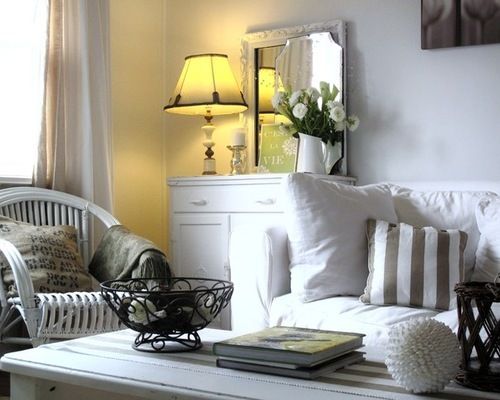
Original photo on Houzz
Let’s start with Shabby Chic, because it’s been such a hot style over the past couple of decades. Rachel Ashwell introduced this look in 1989 out of her conviction that the imperfect is beautiful. It features slipcovers and vintage furniture and accessories, and was an almost-instant hit because of its comfortable, inviting look.
Although Shabby Chic has morphed over the years and has been adopted, expanded and respectfully plagiarized, its basic ingredients remain the same: washable slipcovers in creamy whites and pastels, with very little pattern but lots of texture. Those are married to furniture that is well worn (usually with peeling paint) and accessories that often include vintage gilt and crystal (think Paris flea market).
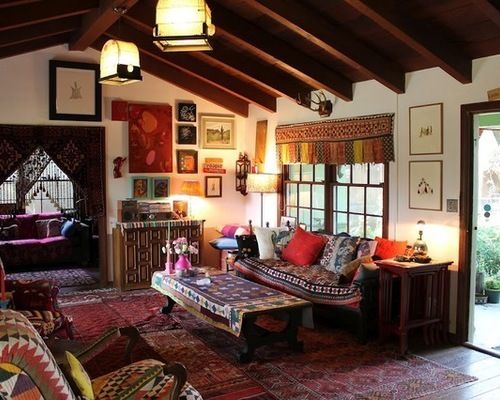
Original photo on Houzz
Can you picture a camel languidly undulating across barren sands with a worn Persian rug as a saddle, and bells with tattered trim hanging from its neck?
If Shabby Chic had a great-great-grandmother, it would be bohemian style, which combines the allure of a gypsy wagon with the mystique of a desert caravan. Brightly colored — if somewhat faded — fabrics and trims cover everything from chairs and sofas to window treatments and wall hangings. Heavily patterned rugs cover the floors, often layered one on top of the other, as in this so-very-inviting room.
Bohemian relies on furniture that is well worn and often ethnic. You get the distinct impression that a flea market and a free spirit are bohemian style’s best friends.
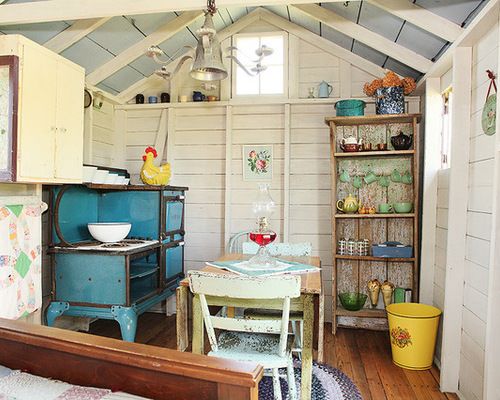
Original photo on Houzz
Cottage style could understandably be mistaken for Shabby Chic. They are, after all, essentially fraternal twins. But there are some distinctions.
With cottage style there is often more color on the walls and trim — always mixed and unmatched. Layering is important, while wicker and iron are favorite elements.
There is usually more color and pattern in the fabrics as well. Cottage-y fabric choices range from soft florals to small prints to plaids and stripes. But all have a touchable, you-can’t-damage-me look.
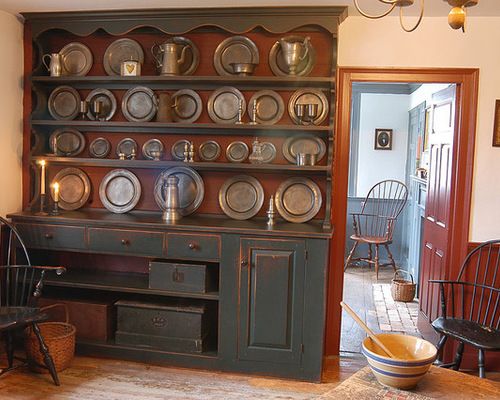
Original photo on Houzz
Farmhouse style was born of necessity. Whatever was handy and practical was used. Furnishings were often homemade and were beautiful in their simplicity. Because everything was used, loving wear and scratches and dents were part and parcel of the look.
Farmhouse style makes a statement as simple and profound as its look. Nothing needs to be treated with kid gloves; nothing is too delicate or precious.
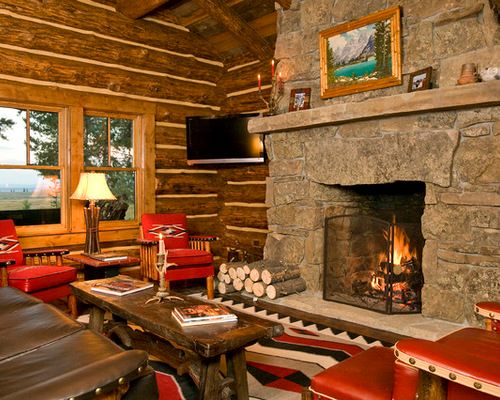
Original photo on Houzz
I like to think of Western style as farmhouse with cowboy boots. It is comfortable, rugged and textural. There is the same emphasis on simple lines, but graphic, colorful fabrics — often woolens in deep, warm reds — are added, and the accessories speak of the prairie rather than the barn.
There are often Native American influences and architectural details that utilize natural stone and rough-hewn logs and beams.
Western nods to cottage as well with its layers of pillows and stacks of blankets.
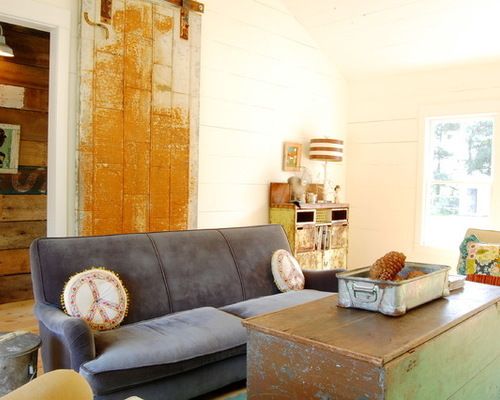
Original photo on Houzz
Here’s the bottom line. Shabby Chic, cottage, Western, bohemian and farmhouse have one critical theme in common: Imperfect is beautiful. When any other style — like contemporary, for example — embraces this notion and introduces one or two pieces that embody it, a sense of warmth and welcome pervades the room.
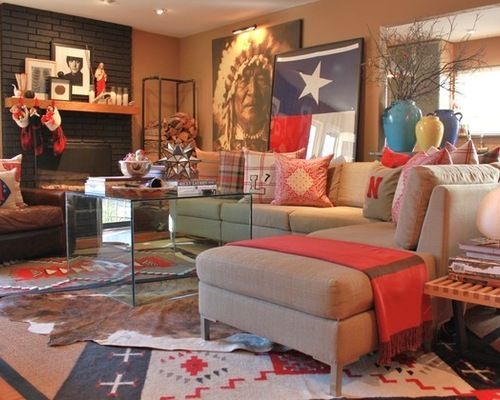
Original photo on Houzz
All of the styles we’ve looked at are represented in this wonderful family room. The artwork speaks of Western; the pillows — in number and fabric — whisper “cottage”; the layered rugs refer to bohemian; and the simple, contemporary linen-y sofa reminds us of both Shabby Chic and farmhouse.
It surely represents the best of all worlds. It’s strikingly personal, interesting and storied, and it doesn’t even hint at “hands off.”
As you peruse your rooms, consider how introducing elements from one or several of these five comfy styles might help you increase the “Welcome!” quotient in your home. Happy hunting!
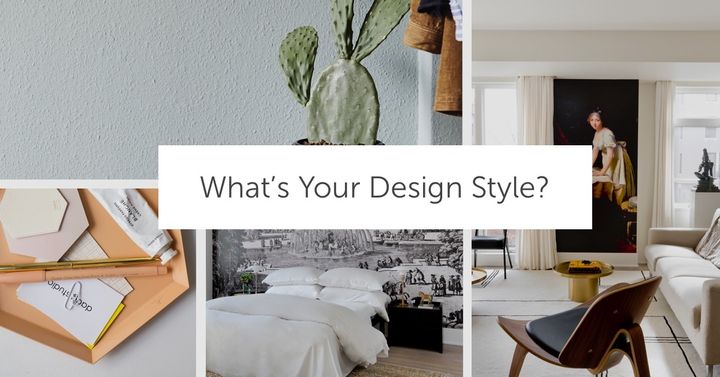
Related: Which Design Style Speaks to You?
